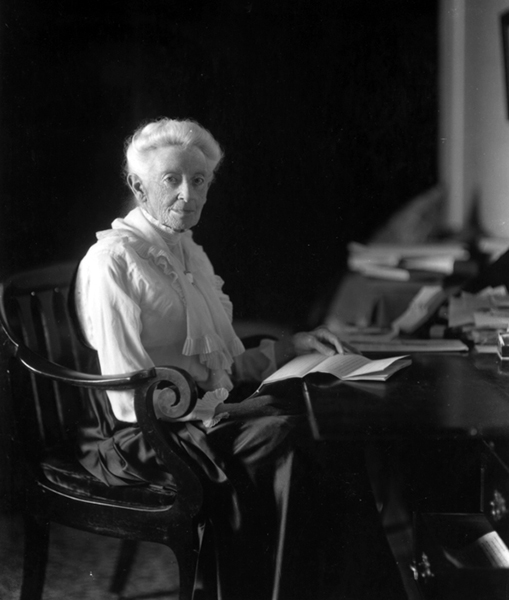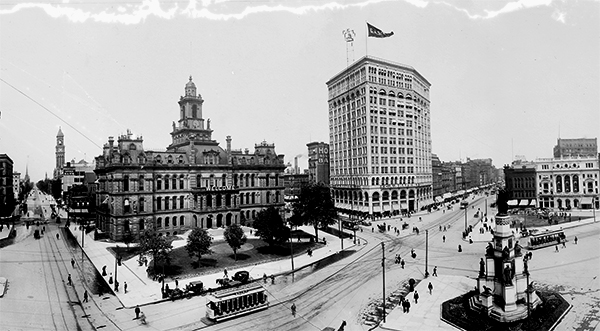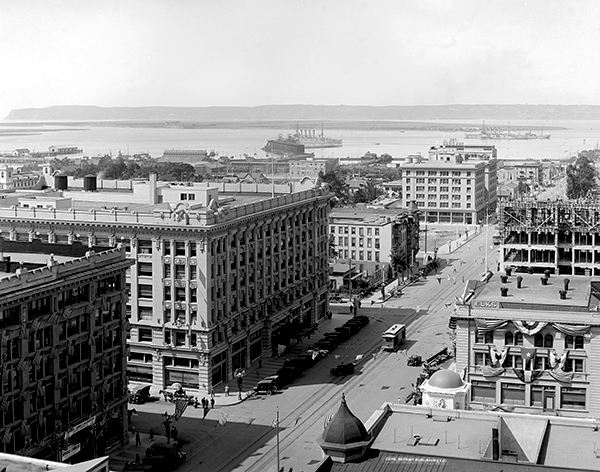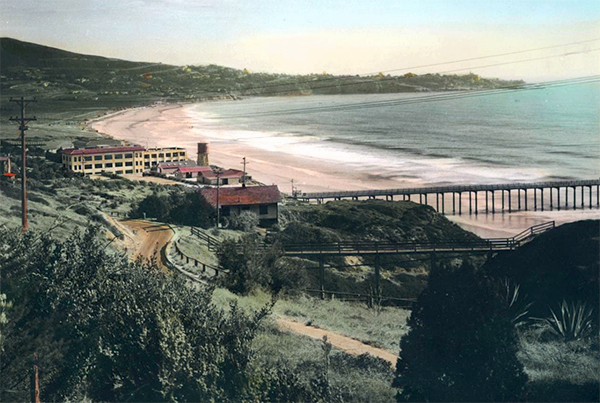Women in Immunology / The Geography of Immunology
E.B. Scripps and the Birth of Scripps Research
by John Emrich and Charles Richter
October 2019
 Ellen Browning Scripps, 1919
Ellen Browning Scripps, 1919
UCSDBiological science in San Diego owes a great debt to one woman. Ellen Browning Scripps was the embodiment of the American Dream and the new dynamism of women in the early 20th century. An immigrant, journalist, entrepreneur, and philanthropist, she became one of the most important leaders in the creation and development of San Diego scientific and educational institutions.
Scripps was born October 18, 1836, in London, England. When she was seven, she emigrated with her family to Rushville, Illinois. Scripps matriculated at Knox College, one of the few institutions of higher learning to admit women, where she studied science and mathematics and earned her certificate in 1859 (no diplomas were awarded to women at that time). While at Knox she witnessed, on October 7, 1858, one of the Abraham Lincoln-Stephen A. Douglas debates. She later returned to Rushville and became a teacher.
 Downtown Detroit, c.1890
Downtown Detroit, c.1890
Library of CongressAfter the Civil War, Scripps moved to Detroit to work in the family business, The Detroit Evening News, the newspaper that launched the Scripps publishing empire. There, she acted as a proofreader and writer of front-page features that included columns on women’s suffrage and prohibition. She built a fortune by investing her own money in, and advising, the Scripps Publishing Company run by her brother, E. W. Scripps. The company soon grew to become the largest newspaper chain in the United States, with major papers first in the Midwest and then Western cities.
 Downtown San Diego, c.1915
Downtown San Diego, c.1915
Library of CongressIn the early 1890s, Ellen and E.W. bought land in San Diego (Miramar Ranch), where they lived until 1897 when she built a seaside cottage in La Jolla. By the first decade of the new century, Scripps had become a pillar of the local community, engaged personally and philanthropically in a growing number of progressive causes.
Scripps’ philanthropic interests were focused almost exclusively on educational and scientific endeavors. In San Diego, she helped establish or fund the Bishop's School; La Jolla Woman’s Club; Children’s Pool; Torrey Pines State Reserve; Scripps Aquarium (now Birch Aquarium at Scripps); San Diego Zoo; and many museums, libraries, and arts programs. Outside of San Diego, she founded Scripps College in Claremont, California, and was benefactor of educational and scientific programs as far away as Cleveland, Ohio. Additionally, Scripps helped establish two world-renowned scientific institutions located in San Diego—Scripps Institution of Oceanography and Scripps Research.
Scripps Institution of Oceanography
 Scripps Institution of Oceanography
Scripps Institution of Oceanography
UCSDInitially established in June 1903 as the Marine Biological Association (MBA) of San Diego, the independent research laboratory was funded by Ellen and E. W. for its first decade, which included a move to its current location in La Jolla and construction of its first permanent laboratory. Individually, Ellen bequeathed $150,000 in 1909 to support a permanent location in La Jolla, and from 1913 to 1916 donated $130,000 for the construction of additional campus facilities, including the iconic pier. In 1912, after the MBA deeded its property to the University of California Board of Regents, the facility was renamed Scripps Institution for Biological Research; the current name was conferred in October 1925.
Scripps Research
In 1924, inspired in part by the revolutionary discovery of insulin by Frederick Banting and Charles Best in the early 1920s, Scripps founded the Scripps Memorial Hospital (now Scripps Health) and, within it, the Scripps Metabolic Clinic, a research facility with the mission to investigate and treat diseases, especially diabetes. When Scripps died in 1932, she left the clinic $300,000 (~$5.5 million today) “preferably for research.” In 1946, the clinic separated from the hospital and began to build new research facilities and recruit scientists. Today it is known as Scripps Research.
On February 22, 1926, Scripps became one of the first women to appear on the cover of Time magazine, which recognized her for her many philanthropic efforts and called her the “most beloved woman in Southern California.” It is estimated that her lifetime donations amounted to over $36 million in 2018 dollars. Scripps died at her home in La Jolla on August 3, 1932, a few weeks before her 96th birthday.
See related published articles:
References
- Shor, Elizabeth, Deborah Day, Kevin Hardy, and Dora Dalton. “Scripps Timeline.” Oceanography 16, no. 3 (2003), 109–19.
- Walshok, Mary Lindenstein and Abraham J. Shragge. Invention and Reinvention: The Evolution of San Diego’s Innovation Economy. Redwood City, CA: Stanford University Press, 2014.